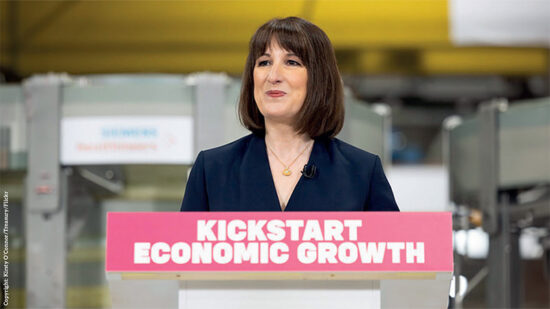In this article about changing the nature of the financial advice conversation with clients, we will examine why change is needed, how we should go about changing it and the possible consequences if we fail to act.
I fell into the financial services sector in the 1980s. I didn’t go to financial adviser training school or do a degree in financial planning and, unlike other professions, I wasn’t trained to be an adviser or a planner before being let loose on the public. I became a broker and my job was to distribute the industry’s products.
The conversations with customers (they weren’t clients) were about financial products, and what I learned was how to discuss sales.
Old-school conversations
I learned to prospect through creating fear, building rapport and finding common points of interest to make people feel comfortable. I developed the technique of ‘disturbing’ them and then overcoming objections. I had to ‘always be closing’ at the earliest opportunity.
I managed my day so that I could fit as many sales meetings into it as possible. I learned how to fill in a factfind form, find gaps in coverage to sell into, and how to follow a linear sales process and check all the boxes.
I learned how to disclose only what needed to be disclosed for compliance purposes, how to have transactional conversations and transactional relationships and how to tell the story that the industry wants to tell people, which is: ‘You are under-insured, under-saved and you need to buy our products or you’ll regret it.’
With the benefit of hindsight, I can see I wasn’t building a business and I wasn’t building client relationships. The truth is, I wasn’t listening to my clients or asking the right questions. I was asking what I wanted to ask without thinking about what was important for them.
These were loaded questions, often suggesting to people what they should aspire to want. So many of our sales conversations are designed to manipulate people.
As a result, my client relationships were superficial. I struggled to get engagement and referrals. Often I found it hard to get paid for work I had done.
Also, the process wasn’t fulfilling me. In the early days, the shallowness of such conversations didn’t bother me but as time moved on, my energy for such conversations reduced and I felt flat.
I was always interested in people and in helping them but I hadn’t learned how to do that properly and I certainly wasn’t incentivised to do so.
Asking the wrong questions
Does this sound familiar? For most brokers this is the current reality. Fundamentally, the conversation hasn’t changed in the past 30 years or more. Sure, over time some things have developed.
Many brokers have moved away from selling insurance products to selling investment products, mostly as a means of generating recurring business revenue, but still the conversations haven’t altered.
From a marketing perspective, some of our language has evolved. We now describe ourselves as financial planners or wealth managers and we purport to help people achieve their important lifetime goals, or words to that effect. But the truth is that we are still not paid to do that.
We are paid to distribute products and gather more assets to ‘manage’. We are incentivised by the industry but remain conflicted by it. Despite the fancy marketing language, conversations behind closed doors revert to creating more distribution.
Studies frequently demonstrate that the public perception of trust in financial services providers is low. When I talk to people outside of financial services, they are happy to share bad-news stories.
From my own experience of observing advisers in action, we are still not asking the right questions or listening to clients.
If we don’t have the right conversations, we may find ourselves disintermediated, cut from the supply chain and wondering what happened
10 signs that you are having the wrong conversations
- Clients are guarded with information and they don’t seem engaged
- You struggle to get referrals from existing clients
- Your pitch is all about you, your company and how great you are
- You have preconceived ideas about what people should want and you don’t know why some things are (or are not) important to your clients
- You typically ask very few questions, or loaded or closed questions
- In the first meeting, you do all the talking
- You close sales within the first two meetings
- You spend most of your time talking about products, product terms, filling in forms or writing reports
- You don’t have the time to spend with people. You fill every available space in your diary with short meetings
- You’re more interested in what you want than what your client wants. It’s all about getting the business
What needs to change?
So, it is clear that advisers are having the wrong conversations with their clients and, if we are to remain relevant, this needs to change. But what specifically needs changing? Initially, I’d say two things: our mindset and our questions.
We need to shift ourselves away from an adviser-centric mindset to a client-centric one. I can hear you telling me you are already client-centric. But are you, really?
Client-centric means we exist to support our clients and deliver value. I’m sure that is something we all strive for. But then comes the challenge of being in business.
Businesses need to make money. But what comes first, making money or finding a client with a problem to solve?
Management consultant Peter Drucker said: “The purpose of business is to find and keep a customer.” This means the concept of finding and solving the customer’s problem is the starting point. If you do that well, you will not have a problem getting paid.
I believe one of the biggest cultural challenges we face is to make the shift from being in business simply to make money to being in business to solve real problems.
When we learn sales skills, we learn to probe, disturb and ask questions. But most of the time we are doing that as part of a sales process for us rather than an advice process for clients.
I believe that a large part of the problem is the incentives to shortcut the process that are placed in front of advisers and the pressure they feel to deliver on distribution.
What can advisers do?
The industry says it wants to help advisers transition through this period of immense change, but only as long as distribution isn’t affected. So what can advisers do?
I believe advisers should stop pushing for more distribution. Although it may seem counterintuitive, the less interested you are in distribution, the more distribution opportunities you are likely to get. In other words, if you focus on what really matters to people, and pull them into the right conversations, you will solve real-world problems and get paid for it.
The harder you focus on distribution, the more transactional the relationship becomes, and client engagement will invariably be lower. You can’t fake this; it must be authentic.
We need to spend more time with clients. Lots of advisers tell me their clients don’t want long conversations, using this as an excuse to get in front of more people. This is probably a result of the industry focus on prospecting for as many clients as possible.
Clients want good quality conversations. They have little patience for superficial conversations about things they don’t care about. I encourage you to slow down, be patient and spend more time with people.
Over the years I’ve found this to be the hardest thing to overcome. When someone is talking, we are often thinking about how we will respond before they’ve even finished, rather than listening and trying to understand. That is not client-centric but adviser-centric.
I’ve often found myself asking questions and then filling the silence with more questions. Silence can be uncomfortable, but, remember, if you’ve asked someone a great question, they need time to process it and summon up the response. There might even be some emotion they have to deal with.
Even worse, we might be inclined to try and answer the question for them or give them some options. Part of our job is to hold the space while they think.
Our processes often feel more like an interrogation than a conversation, and that is not going to lead to highly engaged clients.
Asking the right questions can be deeply uncomfortable for some advisers but I think this is where the magic starts to happen, and it is worth going through the discomfort of learning how to do it well.
Most great questions are open rather than closed. They must not be loaded to be answered in a specific way, and while they should have a flow, they are not delivered in machine-gun fashion.
More than anything else, they require depth. We need to dig a little deeper to get the real issues, and in order to ensure that our proposition will be seen as valuable.
10 magic questions
Next time you’re talking to a prospective client, try asking some of these questions:
- Where are you trying to get to financially?
- Why is it important to you?
- Where are you currently stuck?
- What have you tried doing already, and why didn’t that work?
- What is going on that will likely impact on this?
- What concerns do you have about solving this problem?
- How would you feel if you couldn’t achieve this?
- What value can I add here?
- What do you need to happen in the next 12 months in order to feel like you’ve had excellent value?
- What would a great outcome look like for you?
The implications of failing to change
Having addressed how to instigate better conversations with clients and the mindset changes required to become truly client-centric, I now want to explore the conversation advisers have when they go back to clients with their recommendations, having understood the challenges and collected all the data.
In product-selling situations, the next conversation is typically about having a recommendation and all the paperwork ready, overcoming any objections, closing the deal and getting ‘the business’ – that’s mostly about selling other firms’ products.
In future, it will be increasingly difficult to get clients to pay for a superficial conversation and a product sale, and this transactional ‘distribution’ role won’t allow advisers to earn what they have been used to.
Since the business is transactional, advisers are unlikely to be building any lasting business value either. If you don’t believe this, just take a look at what the blockchain is promising to do to intermediaries.
For many good financial planners, who are following the six-step financial planning process, the next meeting will involve presenting the recommendations in a plan to the client.
The adviser will have done lots of research and written a comprehensive report. Sometimes this is sent to the client but often it is presented to the client directly at a meeting.
It is highly logical and seems to make sense, but there are some challenges thrown up by the six-step process itself:
- it’s an expensive process – all that analysis and research takes a long time;
- it’s disengaging for clients – it is being done in the back office without their involvement;
- it’s not responsive – if there have been any changes to the data, or the client suddenly throws in a question that changes everything, the report may have to be done again; and,
- it’s mostly still contingent upon the sale of products to get paid.
The six-step financial planning process is a ‘consultative’ process that was developed in the 1960s, designed for a world that didn’t have computers or the internet.
What is more, the world has developed a whole new level of complexity, and financial planning for most reasonably wealthy individuals is a seriously complex ‘problem’ with many variables and moving parts.
Change one area and it instantly affects another. Answer one question and it raises several more. The production of a static, written report does not allow for the fluidity of the exchange of ideas in a conversation. It certainly doesn’t allow for multiple scenarios to be explored and discussed.
Open discussion and collaboration
I believe the answer lies in deeper conversations, open discussion and exploration of the trade-off decisions that people face in their lives. It also depends on collaboration and co-planning, built around the real-time presentation of scenarios, using great technology.
Scenarios are possible situations that enable clients to see what the future might look like. With hyper-complex problems, such as financial planning, writing a static report with all the ‘correct’ answers doesn’t allow for the necessary engagement required to learn, adapt and understand.
We need is to be able to simulate scenarios and see the bigger picture. Now that would be really engaging.
The role of the adviser then changes. We get to encourage clients to ask questions they haven’t thought of, or don’t know to ask – even if it’s potentially detrimental to a product sale. Instead of handling objections, we get to raise them. That’s the difference between disclosure and transparency.
Having these conversations and using a coaching style brings about deeper client engagement. It’s also more rewarding – financially and emotionally – for the adviser.
Trust can happen in a matter of minutes, the adviser’s sense of purpose increases dramatically and getting paid isn’t a problem – even if there isn’t a new product required.
Will ‘robo-advisers’ be a threat or an opportunity for financial advisers? I believe the answer is both potentially, depending on what advisers are currently delivering. The robo-sales process is linear, when the financial planning process is cyclical.
At present, robo-advice seems like a big threat to lots of advice firms that essentially follow a linear process, selling products or choosing investment funds with expensive human advisers.
However, for a technology-enabled adviser, offering lifestyle and scenario planning, there is no foreseeable threat.
Our skills as advisers need to be centred around asking better and deeper questions, and helping people to see the bigger picture.
We must help increase clients’ understanding of the conflicting trade-off decisions they face in their lives, managing their emotions and behaviours, and ultimately getting them to informed decisions that support the life they really value.
The solution is not an ‘information age’ consultative process but a ‘digital age’ collaboration process, and it requires a professional scenario-planning tool.
We must focus on having human conversations and show people the impact their decisions can have.
If that’s done well, and we can use clever tech to help with simulations and scenarios, advisers will not only find more purpose in their work but we’ll also find our clients are more deeply engaged, have no reason to leave us and will continue to willingly pay us for our valuable support.
Ultimately, it means advisers are building sustainable businesses that last.
Consultative process
- Assumes clients know what they want
- Goals-based planning
- Static report printed and presented
- Built away from the client (disengaged)
- Done for the client
- Logical
- Objections to be overcome
- Slower
- Tools designed for the back-office
Collaborative process
- Assumes clients don’t know what they want
- Possibilities-based planning
- Responsive scenarios to explore
- Built in front of the client (engaged)
- Done with the client
- Emotional
- Objections to be raised
- Faster
- Tools designed for the front-office
Further reading:
Financial advisers still have much to prove
By Brian Foster, CEO and founder, Beyond RDR








